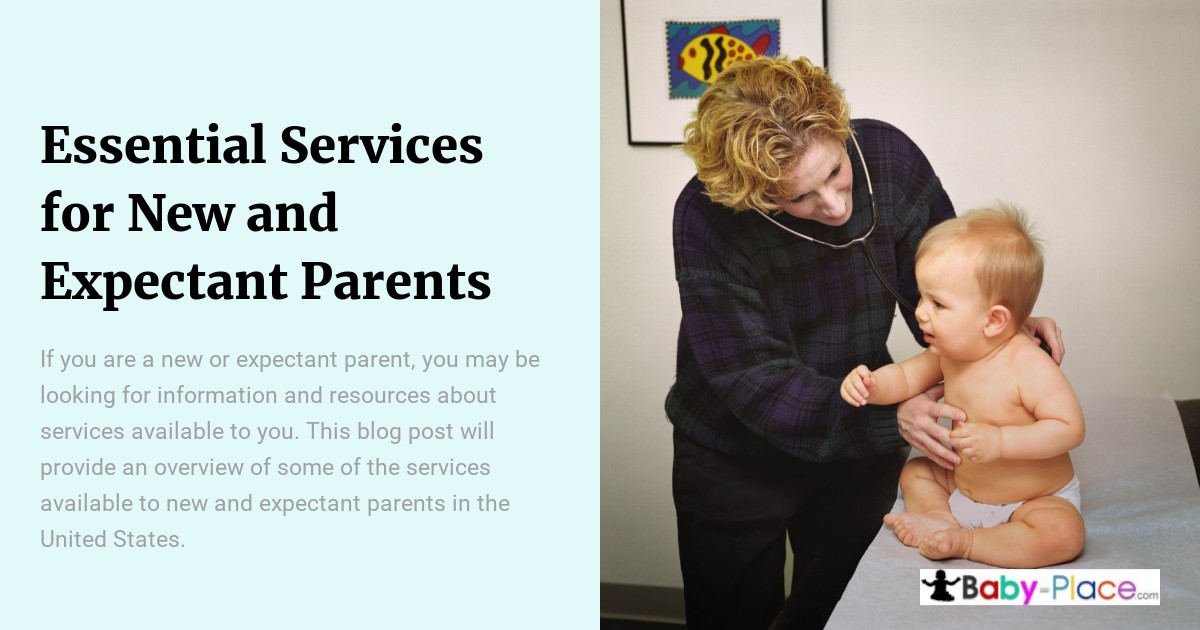As a mental health professional, I have seen firsthand the impact that death can have on children. Young minds are often unable to comprehend the concept of mortality fully and may struggle with their emotions when faced with loss. As parents, we are responsible for providing support and guidance to our children during these difficult times.
It’s important for parents to approach conversations about death thoughtfully and compassionately. These discussions can be uncomfortable, but they are essential for helping a child process their grief and develop coping skills.
In this article, we will discuss strategies for talking to your child about death in an age-appropriate way, how to address common questions or fears they may have, and offer tips for providing ongoing support as they navigate through the grieving process.
Preparing for the Conversation
Constructing the conversation: It’s important to decide how you want to approach the conversation with your child.
Finding the right words: Try to use language that’s appropriate for the child’s age and maturity level.
Timing the conversation: It’s essential to find the right time to have the conversation – when your child is relaxed and open to it.
Constructing the Conversation
Exploring emotions can be difficult, but providing a safe space for your child to express their thoughts and feelings will help them healthily process their grief.
It’s important to use age-appropriate language and avoid euphemisms that may cause confusion or fear.
Remember that this conversation is not just a one-time event. Checking in on your child periodically after the initial discussion can provide an ongoing opportunity for support and healing.
Finding the Right Words
Finding the right words to express empathy and support can be challenging, but it’s essential to use language that is appropriate for your child’s age and level of understanding.
Timing the Conversation
When it comes to preparing for the conversation about death, timing is an essential factor to consider. It’s vital to acknowledge your child’s feelings and create a safe space for open dialogue. However, choosing the right moment and environment can make all the difference in how they receive this information.
Avoiding times of high stress or distraction can help ensure that your child feels heard and supported during this emotional process. Keep in mind that there is no set timeline for when to have this conversation. Each family dynamic is unique and requires individual consideration.
Explaining Death in an Age-appropriate Manner
It’s important to understand death is a natural part of life as you explain it to children. You’ll want to keep your explanation at an age-appropriate level, so they can understand it. Comforting children can be done by offering support and reassuring them that it’s okay to grieve.
Understanding Death
As parents, it can be incredibly difficult to explain the concept of death to our children. It is a topic that evokes strong emotions and can bring up feelings of fear and sadness. However, understanding death is an important part of life, and acknowledging beliefs around this subject can help with coping strategies later on.
It’s essential to approach this conversation in an age-appropriate manner while honoring the memories of loved ones who have passed away.
Explaining what happens when someone dies and using concrete examples such as plants wilting or animals no longer moving will aid their comprehension.
Ultimately, helping your child understand death is a vital step toward healthy grieving processes in the future.
Explaining Death to Children
Providing emotional support during such difficult times will also help children cope better and pave the way towards a healthier grieving process.
Comforting Children
It is crucial to approach this topic with sensitivity and empathy while keeping in mind the child’s developmental stage when providing explanations about death.
Responding to Questions and Concerns
It’s important to be prepared to answer your child’s questions about death honestly and clearly. At the same time, it’s equally important to listen to their concerns and respond in an understanding way.
Answering Questions
Talking to your child about death can be a difficult and emotional experience, but it is important to make sure that you are able to answer any questions they may have.
One strategy for answering these questions is using metaphors or analogies to help children understand complex concepts like death. For example, you might explain that just as leaves fall off of trees in the autumn, living things also come to an end at some point.
Coping strategies like deep breathing exercises or mindfulness techniques can help both you and your child stay calm and centered during these conversations.
Remember that there is no right or wrong way to talk to your child about death – what matters most is being open, honest, and supportive throughout the process.
Listening and Responding
When a child comes to you with concerns or questions about death, it is crucial to acknowledge their emotions and provide reassurance. This can be done by actively listening to what they are saying, repeating back what you heard to make sure you understand correctly, and then providing thoughtful responses.
It is also important to recognize that each child may process death differently and at their own pace, so being patient and supportive throughout the conversation is key.
By prioritizing active listening and responsive communication, you can help your child feel seen, heard, and supported as they navigate this challenging topic.
Offering Comfort and Support
Use respectful language to explain death and emphasize the importance of honoring memories.
Second, provide your child with reassurance and patience as they grieve, and consider engaging in comforting rituals together. Connecting to nature can also be a therapeutic way to promote healing.
Finally, be sure to practice self-care and take necessary breaks to ensure that you’re able to provide your child with the support they need. Ultimately, it’s important to remember that grief is a process and everyone experiences it differently.
Listening
Listening is key in providing comfort and support as they process their emotions. Allow them to express themselves freely without judgment or interruption.
Validate their emotions by acknowledging that what they’re feeling is normal and understandable. It’s also crucial to provide reassurance that you’ll be there for them every step of the way, no matter how difficult things may get.
By listening with empathy and offering reassurance, you can help your child feel supported during this challenging time.
Grieving Together
Now that we’ve discussed the importance of listening and validating your child’s emotions when talking about death, it’s also essential to emphasize grieving together.
Coping strategies can vary from person to person, but one effective way to provide comfort is by coming together as a family to mourn and remember the loved one who has passed away.
Encourage your child to share memories or stories they have with their loved one, while also sharing your own experiences.
It’s important to keep in mind that grief isn’t linear – there may be times where you or your child feel overwhelmed with emotion even after some time has passed.
Reassure them that this is normal and offer support through these difficult moments.
Discussing afterlife beliefs can bring a sense of peace for those struggling with loss.
Explaining Death
Children may have trouble understanding the concept of mortality and may struggle with fear or anxiety surrounding their own mortality or the mortality of loved ones.
It’s important to explain death using simple language appropriate for your child’s age while also remaining truthful about the permanence of loss.
Furthermore, addressing afterlife beliefs if applicable can provide a sense of comfort and peace for those dealing with fear and facing mortality.
Using Examples to Explain Death
To help your child understand death, it is important to use stories, explain the death of a pet, share memories, explain the death of a family member, and encourage them to ask questions. These topics can help your child better understand the concept of death.
Using Stories
It’s important to find books that are age-appropriate and have relatable characters.
This can help the child understand that death is a natural part of life and not something to be feared or avoided.
Encourage your child to ask questions about the story and use it as an opportunity to create memories with them.
By doing so, you’re helping them process their emotions in a healthy way while also fostering positive communication between parent and child.
Explaining Death of a Pet
Now that we’ve discussed the importance of using stories to explain death to children, let’s focus on a specific type of loss: the death of a pet.
For many children, losing a beloved animal can be just as difficult as losing a family member or friend. It’s important to acknowledge this loss and help your child process their emotions in a healthy way.
One way to do this is by creating a pet memorial, such as planting a tree or making a scrapbook together. This allows your child to honor their pet and remember them fondly while also providing an opportunity for open communication about their feelings.
As with any type of loss, it’s important to be patient and supportive as your child navigates their grief.
Helping Your Child Express Their Feelings
Listen to your child’s thoughts and feelings surrounding death. Validate their experience, no matter how difficult it may be. Comfort them by expressing your understanding of their grief and explaining that it is a natural response. Discuss memories of the person who has died, exploring their feelings and helping them to express their emotions. Encourage them to talk openly, normalizing their sadness and understanding their feelings of loss. Provide them with support as they find comfort in their own way.
Listening
As a parent, it can be tough to see your child struggling with their emotions.
When discussing death, it’s essential that you create an open dialogue where they feel comfortable expressing themselves without fear of judgement or criticism.
Acknowledge the emotions they’re experiencing and let them know that it is okay to feel sad, angry, confused or any other emotion in response to loss.
By listening attentively and empathetically, you provide them with a safe space to process their feelings and help guide them through this difficult time.
Validating
Now that we’ve talked about creating a safe space for your child to express their emotions, let’s dive deeper into the concept of validating.
Validating refers to acknowledging and accepting your child’s emotional reactions as legitimate and understandable. This is an essential part of helping them cope with difficult situations such as loss or grief.
When you validate your child’s emotions, you help them feel seen and heard, which can reduce feelings of isolation or loneliness during this challenging time.
Comforting
Facing fear and coping with difficult emotions can be overwhelming for children, and providing comfort is an effective way to help ease their distress. Comforting involves offering physical and emotional support to your child when they are experiencing intense emotions such as anxiety or sadness.
As a parent or caregiver, you play a critical role in creating a sense of safety and security for your child during times of stress.
Explaining the Funeral Process
It’s important to talk to your child about funeral rituals, the meaning of funeral services, and the significance of funeral ceremonies. These can be difficult conversations to have, but it’s important to make sure your child understands why these rituals are important. Explaining the process of funerals can help them gain closure and understanding around death.
Explaining Funeral Rituals
As a parent, explaining funeral rituals to your child can be a daunting task. However, it is crucial for their emotional well-being that they understand what will happen during the process of grieving and mourning.
It’s important to acknowledge your child’s emotions and allow them to ask questions about different parts of the funeral ceremony. Seek help from professionals if necessary to ensure you have all the information needed to explain each aspect in an age-appropriate way.
Remember that every family has its unique traditions, so it’s essential to emphasize that these rituals are intended as a way for loved ones to say goodbye and honor those who have passed away.
By gently guiding your child through this difficult time, you can provide comfort and support while helping them come to terms with the loss of someone dear to them.
Explaining the Meaning of Funeral Services
As we previously discussed, explaining funeral rituals to a child can be an emotionally challenging task. However, it is crucial for their emotional well-being that they understand the meaning behind each aspect of the process.
One way to do this is by acknowledging your child’s emotions and allowing them to express any confusion or concern they may have about what will happen during a funeral service.
It is essential to remember that honoring memories is a significant part of the funeral process, and explaining this concept in age-appropriate terms can help children feel more connected to the experience.
Dealing with Grief and Loss
It’s important to understand that grief is a normal response to loss and it’s important to open up a dialogue with your child about it. Coping with loss is a process that may take some time, so it’s important to provide your child with support and reassurance as they work through their emotions.
Taking Care of Yourself
Eating well is an important part of taking care of yourself. Ensure that you’re getting the nutrients and calories you need to stay healthy and energized. Exercise can help reduce stress and boost your mood. Aim for 30 minutes of physical activity most days of the week. Incorporating self-care rituals such as meditation, journaling, and positive affirmations into your daily routine can help you maintain your emotional and mental wellbeing.
Eating Well
Let’s make sure that we are taking care of ourselves during this difficult time. It is important to remember that food plays a crucial role in maintaining our physical and mental well-being. I recommend avoiding junk food as much as possible and incorporating healthy options into your diet such as fruits, vegetables, whole grains, lean proteins, and healthy fats.
Regular exercise is also essential for improving mood and reducing stress levels. Try to set aside at least 30 minutes each day for physical activity whether it be going for a walk or doing an online workout class.
Remember that small changes can make a big impact on overall health and wellness.
Exercise
Exercise is just as vital for maintaining physical and mental well-being as a nutritious diet.
Regular physical activity not only helps in weight management but also improves mood by releasing endorphins which promote a sense of happiness and relaxation.
In addition, creative coping mechanisms such as yoga or meditation can reduce stress levels significantly.
It is essential to incorporate healthful habits into our daily routine to maintain overall wellness during this challenging time.
Remember, small changes can make significant impacts on your life!
Self-care Rituals
Just like mourning rituals or afterlife beliefs, self-care ritual helps us process emotions and take care of ourselves during challenging times.
These practices can vary from person to person but may include things such as taking a relaxing bath, reading a book, practicing mindfulness meditation, or journaling.
By engaging in these activities regularly, individuals can reduce stress levels and improve their overall sense of happiness and well-being.
Remember that incorporating small changes into your everyday life can go a long way in promoting optimal wellness!
Here are five common questions that children may ask about death and grief, along with sample answers that you can use to help explain these difficult concepts to children:
- What is death? Death is when someone’s body stops working and they can no longer breathe, move, or think. When someone dies, their body no longer works like it used to and they can no longer be with us.
- Why do people die? People die for many reasons, such as old age, sickness, accidents, or other causes. It’s a natural part of life, even though it can be sad and difficult for those who are left behind.
- What happens after someone dies? Different people believe different things happen after someone dies. Some believe that the person’s spirit or soul goes to another place, such as heaven or another dimension. Others believe that the person simply stops existing. No one knows for sure what happens after we die, but it’s okay to have different beliefs and to talk about them.
- Why do people cry when someone dies? Crying is a normal and natural way for people to express their feelings when someone dies. It’s a way to let out emotions and to show that we care about the person who has died. It’s okay to cry and to feel sad when someone dies, and it’s important to talk to someone if you’re feeling overwhelmed.
- How can I feel better when someone dies? It’s normal to feel sad and to miss someone who has died. Everyone grieves in their own way, and there’s no right or wrong way to feel. Some things that might help you feel better to include talking to someone you trust about your feelings, doing something that you enjoy, and remembering the happy times that you shared with the person who has died. It’s okay to take time to grieve and to remember the person in your own way.
Talking about death is hard enough for adults. But when a family member or close friend passes away, it is especially difficult to know how to discuss the tragedy with a young child.
This video shows the Sesame Street gang explaining to Big Bird–without euphemisms and with tremendous compassion–that Mr. Hooper has died. I think the writers did an excellent job. Take a look.















